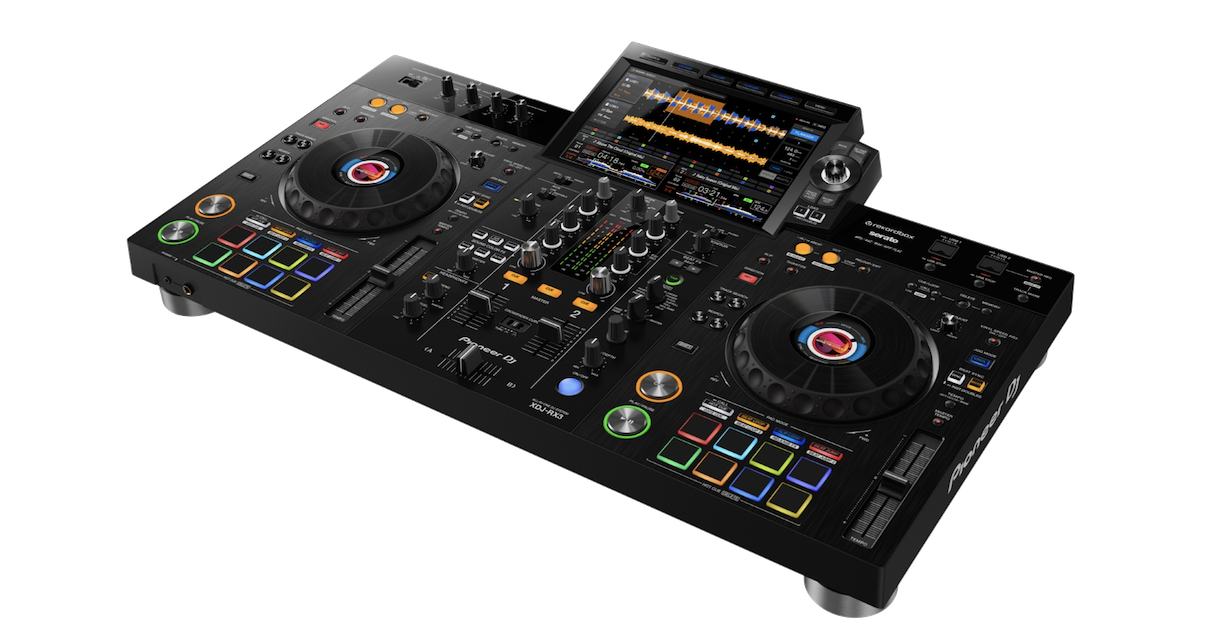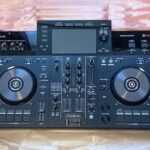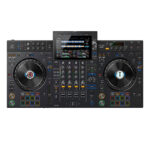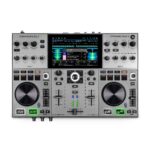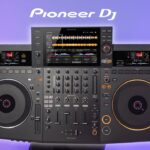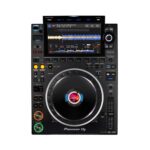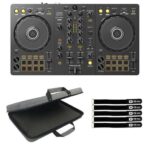The Pioneer DJ XDJ-RX3 delivers a major upgrade with a 10.1-inch touchscreen, enhanced performance pads, expanded FX control, and Rekordbox and Serato compatibility — setting a new benchmark for standalone DJ systems.
Pioneer DJ XDJ-RX3 Review: The All-In-One Powerhouse for Modern DJs
The Pioneer DJ XDJ-RX3 represents one of the most significant leaps forward in all-in-one DJ systems. Building upon the legacy of the XDJ-RX2, the RX3 brings club-grade power and next-generation features to the home and professional performance world alike. With its massive 10.1-inch touchscreen, refined jog wheels, expanded pad modes, and dual Rekordbox and Serato DJ Pro support, this unit is designed to streamline performance without compromising creative capability.
Design and Build Quality
At first glance, the RX3 carries Pioneer’s unmistakable professional aesthetic—sleek lines, solid construction, and a clean layout. The 10.1-inch resistive touchscreen is front and center, offering a user experience that mirrors the flagship CDJ-3000. While it’s not capacitive (so no pinch-zooming or multitouch gestures), it remains vibrant, responsive, and dependable—even in live performance conditions.
The overall layout echoes Pioneer’s CDJ/DJM ecosystem, meaning seasoned club DJs will feel right at home. Every knob, button, and fader feels premium, with solid tactile feedback and intuitive placement.
Expanded Touchscreen Interface
The headline feature of the RX3 is its bright, 10.1-inch display—a major upgrade from the RX2’s smaller screen. Browsing music is now faster and more enjoyable, with clearer navigation, high-resolution graphics, and an expanded playlist view showing up to twelve tracks per screen. Pioneer has also added CDJ-3000-style interface enhancements, giving DJs a familiar workflow.
A standout improvement is the Playlist Bank feature, letting users store up to four playlists for instant access. It’s ideal for organizing large libraries, though some may wish Pioneer included display labeling for even easier recall. DJs can now also preview tracks directly through the waveform browser by tapping the waveform—perfect for confirming track choices without loading them into a deck.
Jog Wheels and On-Screen Displays
The RX3 debuts redesigned jog wheels similar to those on the DDJ-800, complete with customizable center displays. While smaller than CDJ units and still capacitive rather than mechanical, they deliver a smooth feel and responsive control. The built-in screens display deck indicators, cue position, and artwork—helping distinguish between USB sources and adding a professional polish to the user experience.
Jog adjust allows tuning from light and free-spinning to weighted and resistive. Although waveform display within the jogs would have been welcome, the crisp RGB and positional feedback remain highly effective.
Performance Pads and Creative Modes
Pioneer massively enhanced pad functionality over the RX2. The eight backlit rubber pads now support secondary pad layers for doubled functionality. For example, pressing Hot Cue twice activates Gate Cue, triggering samples only while pressed—perfect for finger drumming and live remixing.
Additional modes like Release FX and Beat Jump add expressive performance possibilities. Whether triggering loops, FX bursts, or cue rolls, these pads bridge the gap between controller performance and professional CDJ setups.
Mixer Enhancements and Sound Design
The RX3’s mixer section inherits pro-grade DNA from the DJM line, offering refined EQ curves, expanded color FX (including “Space” and “Crush”), and an improved beat FX engine. Mixing feels fluid, precise, and dynamic. Beat effects can be stored in on-screen banks for fast recall—ideal for DJs with favorite delay, echo, or reverb combinations.
Color FX depth can now be adjusted with enhanced resonance control, letting DJs craft more nuanced transitions. Independent Quantize controls per deck add huge creative flexibility—DJs can keep loops on grid for one deck while finger-drumming freely on the other.
Connectivity and Software Support
Out of the box, the RX3 works seamlessly with Rekordbox Performance Mode, unlocking instant control for laptop integration. Upcoming Serato DJ Pro compatibility (via firmware) makes it one of the few Pioneer standalone units to natively support both ecosystems.
Multiple USB ports allow back-to-back sets and easy recording. The new AUX input supports both line-level and portable devices via 3.5 mm jack, boosting signal to the right level automatically. Overall, connectivity is flexible enough for both mobile performers and club settings.
Real-World Use and Performance
In performance, the RX3 feels confident, smooth, and responsive. The touchscreen is large enough to read in sunlight, and the improved waveform display delivers precise visual feedback. The Beat FX X-Pad simplifies effect timing, and its intuitive layout encourages live experimentation.
Despite all the enhancements, there are a few small drawbacks: the resistive screen doesn’t support swiping, there’s no track analysis or streaming capability onboard, and the unit runs at a premium price point (€2,000 at launch). However, the feature parity with Pioneer’s flagship ecosystem more than justifies the cost for serious DJs seeking professional reliability and performance.
Verdict: The Sweet Spot Between Controller and Club Gear
The Pioneer DJ XDJ-RX3 successfully fuses professional-grade performance with the flexibility of standalone operation. It’s a bridge between CDJ/DJM setups and modern controller workflows—making it a dream tool for both experienced DJs and ambitious newcomers.
While not flawless, it defines what a flagship all-in-one should be in 2025: powerful, elegant, and deeply musical. For DJs wanting club-level precision without hauling separate decks and mixers, the RX3 is hands down one of the best choices available today.


